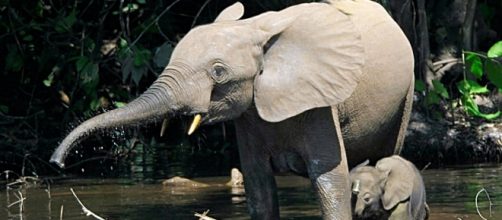Sapo National Park
Liberia’s Sapo National Park contains some of the largest primary tropical rainforests in West Africa. Few people have ever been there and those who have are probably in the ranks of the most intrepid and extreme tourists in the world. Hardly anyone has ever heard of the place, and travelers who like the comforts and luxuries of modern day Travel should write it off their bucket list right now.
Liberian history
Liberia started out as a settlement by the American Colonization Society in 1847 and received recognition in 1862. The country became home to many freed and free-born American slaves.
To the rest of the world, Liberia is best known for the black diamonds and hardwood timber that funded two serious civil wars and domestic unrest from the 1990's through to 2005. Following the fairest election ever recorded in the country in 2005, the relative political stability has allowed the country to focus on the restoration of the National Park.
Sapo National Park is an environmental hotspot and, according to the World Wide Fund for Nature (WWF) has one of the biggest diversity of mammalian species in the world. The 1808-sq.-km rain forest is home to the pygmy hippo, endangered forest elephants, chimpanzees, and a diverse range of other monkeys(including the red colobus and the black and white Colobus).
Before you book your trip to Sapo, you need to know that there are almost no visitor facilities. The best route is via the capital city of Monrovia. Mathew Clark of the Christian Science monitor described how the journey from Monrovia involved traveling via the remote coastal town called Greenville. The next part of the journey involved a dreadful drive on rough roads in rain and mud in an all-terrain vehicle.
The final step involved a four-hour hike through the jungle, river crossings, and no accommodation at the end of the trek.
Civil war and infrastructure
The civil war caused the nearly total failure of the parks roads and infrastructure, and it will take a long time to put it all back together again. This is not a reserve where tourists can drive up to the main gate, pay their fees, and spend their first night sipping cocktails on the lodge veranda.
Nobody can enter the park without the permission of Liberia’s Forestry Development Authority (FDA).
Robert Howard was based at the Sapo National Park in 2007 as a technical advisor for research. His blog explained that the rare pygmy hippos and forest elephants were threatened by hunters and by the illegal miners who poach resources on the forest outskirts. An interesting response to this blog was a number of people asking about visiting the park. His advice to travelers was that the best way to visit was to contact the FDA officeto find out the best options.
One Liberian, who had traveled around the world extensively, visited the park and wrote that he had never seen a more beautiful park in the world.
“It is nature untouched,” he wrote. Since this comment was written in 2008, there has been some effort made to provide visitor facilities of a sort, but even for the intrepid traveler, going it alone would be a hard call.
Ayear ago, the Outpost Magazine gave out some updated information on visiting the park. They explain that there are still no formal hotels but there is basic accommodation available at the FDA which has a guesthouse on the park outskirts, but visitors must be self-sufficient. No formal camp sites exist, but camping is allowed.
The FDA has scouts who must accompany hikers. They now provide canoes to cross the river. Even so, the best option for tourists will be to use the services of Liberia’s Barefoot Safaris.
Barefoot Safaris appears to be the only Liberian Tour Operator and they operate out of Monrovia. Their Facebook page describes the Liberian wilderness as “Lost to the world” for two decades. The About Page has an email address where visitors can make further inquiries about undertaking an adventure of a lifetime to Africa’s primeval forest.

